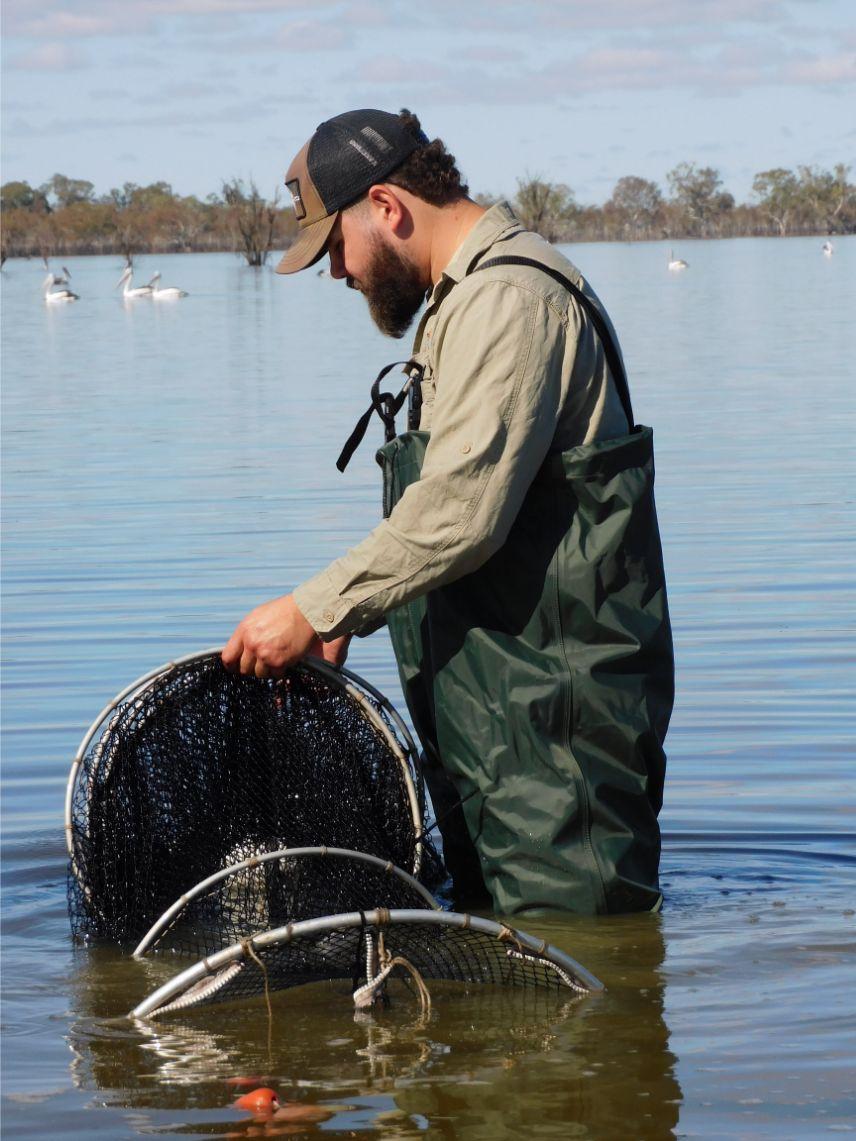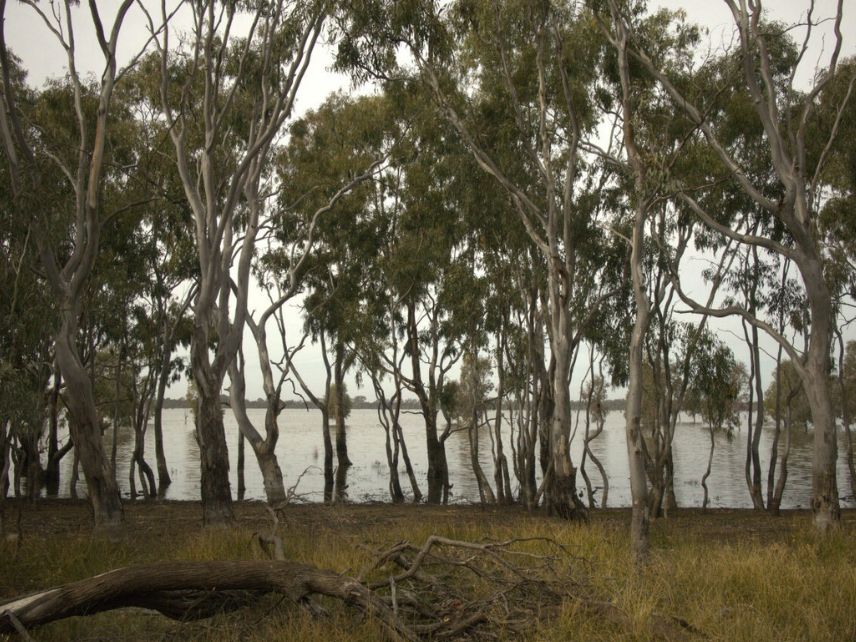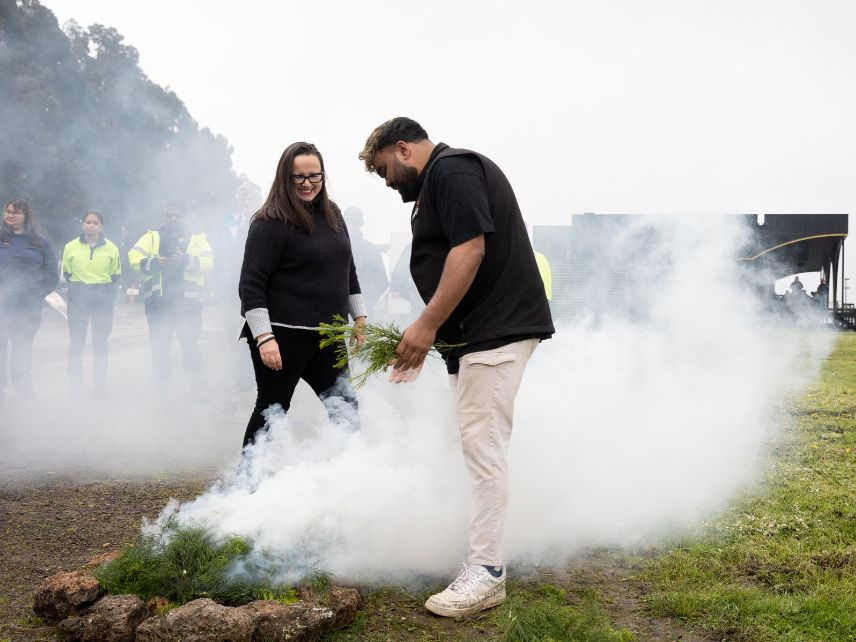Rivers, the veins of our Country, reflects how we incorporate these connections into the management of water for the environment and highlights what we can achieve by working together to create a healthy Basin.
‘Water for the environment’ is used to improve the health of our rivers, wetlands and floodplains.
When we talk about ‘water for the environment’ we are referring to water that is set aside in storages such as reservoirs and dams which is managed for plants, animals and river health. Find out more about water for the environment and how it is managed.
The delivery of this water relies on relationships between dedicated and passionate people from Traditional Owner groups, community, and non-government organisations, together with state and federal agency staff.
These stories provide examples of how First Nations people are working throughout the Murray–Darling Basin to achieve shared Cultural and environmental benefits through the delivery of water for the environment.
The 2022-23 case studies focus on some of the most significant outcomes from collaborations with First Nations peoples in the planning, delivery, and monitoring of water for the environment including:
Water is Life Roadmap
Cultural heritage assessments and natural resource management
First Nations and Western science ecology
Knowledge sharing events
Floodplain, fish, vegetation, and freshwater mussel monitoring
Development of partnership agreements and publications
Studies to inform plant selection for future revegetation, watering and fire events
Careful use of water for the environment has an important role to play in helping to protect and recover the health of Country. The latest case studies highlight what can be achieved by working together to achieve a shared vision for healthy and vibrant Country and Culture and inform our ongoing efforts to improve water management in the Basin.

These stories were coordinated by The Living Murray program in collaboration between First Nation groups, the states and Commonwealth agencies from across the Murray–Darling Basin.
Read the newly released 2022–23 Rivers, the veins of our Country case studies now: Stories of First Nations delivering benefits to Country and communities.
The MDBA recognises the importance of the sophisticated, long-term knowledge and connection with Water Country that First Nations people hold and pass down across generations.
The extensive and detailed knowledge held by First Nations people can help all of us to better understand how Water Country works, how it can be cared for and maintained, and the important relationships that exist between land, water, and people.


